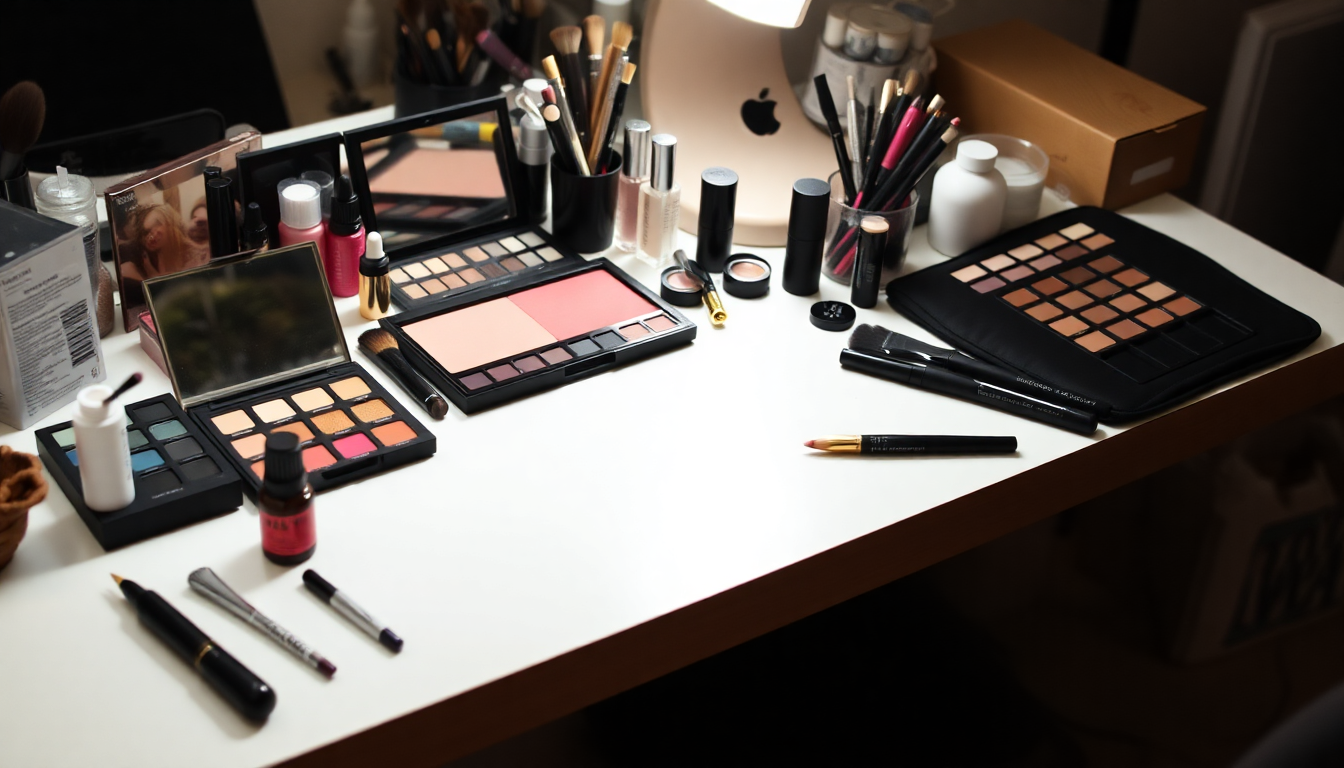
Essential Steps to Establishing Your Private Label Makeup Brand: Navigating Cosmetics Regulations, Import Policies, and Marketing Strategies in 2025
Introduction
Starting a private label makeup brand in 2025 can be a lucrative and fulfilling venture. With the beauty industry continuously evolving, there has never been a better time to enter the market. However, to ensure success, it is crucial to navigate the complexities of cosmetics regulations, import policies, and effective marketing strategies. This comprehensive guide will help you understand the essential steps to establish your brand successfully.
1. Understanding Cosmetics Regulations
Before launching your private label makeup brand, familiarize yourself with the cosmetics regulations that apply in your target market. Here are some crucial aspects to consider:
- Ingredient Safety: Ensure that all ingredients used in your products comply with local safety regulations. Different countries have varying lists of banned substances, so it’s vital to research these lists thoroughly.
- Labeling Requirements: Each country has specific labeling requirements, including ingredient lists, usage instructions, warnings, and contact information. Research these thoroughly to avoid legal repercussions.
- Product Testing: Conduct necessary testing (e.g., dermatological tests) to validate the safety and efficacy of your products. This might include stability testing to ensure the product maintains its quality over time.
- Certifications: Obtain necessary certifications such as cruelty-free, vegan, or organic labels if applicable. These certifications can enhance your brand’s appeal and trustworthiness.
- Compliance with Regulations: Familiarize yourself with regulations set by organizations like the FDA in the United States or the EU Cosmetics Regulation in Europe, as these guidelines will dictate your product’s marketability.
2. Import Policies for Cosmetics
If you plan to import makeup products from manufacturers, understanding import policies is vital to avoid costly mistakes. Key points include:
- Tariffs and Duties: Research applicable tariffs and duties for importing cosmetics into your target country. This will help you budget accordingly and understand your pricing strategy.
- Customs Documentation: Ensure you have all necessary documentation, including invoices, packing lists, and certificates of origin. Proper documentation helps clear your goods through customs without delays.
- Compliance with Local Laws: Familiarize yourself with local laws governing the import of cosmetics. Each region may have specific requirements that can affect your product’s entry.
- Shipping Regulations: Understand the shipping regulations in both your country and the country you’re importing from. This includes knowing which carriers are reliable and how to handle potential customs inspections.
3. Setting Up Your Makeup Online Store
Creating an online presence is essential for reaching your target audience. Here are steps to set up your online store:
- Choose a Platform: Select an e-commerce platform that suits your needs (e.g., Shopify, WooCommerce, BigCommerce). Consider factors like ease of use, scalability, and payment options.
- Design Your Website: Ensure your website is user-friendly and visually appealing. Invest in professional design to create a lasting impression. Make sure it’s optimized for mobile devices, as many consumers shop via smartphones.
- Product Photography: Invest in high-quality product images. Professional photos can significantly enhance the perception of your brand and influence purchasing decisions.
- Payment Gateway: Set up reliable payment gateways to facilitate smooth transactions. Offer multiple payment options (credit cards, PayPal, etc.) to cater to different customer preferences.
- SEO Optimization: Optimize your website for search engines by using relevant keywords, meta descriptions, and alt tags for images. This will improve your visibility and drive organic traffic to your site.
- Customer Service: Implement a robust customer service system, including live chat options and clear return policies, to enhance customer satisfaction.
4. Developing Marketing Strategies
Once your products are ready and your online store is set up, focus on marketing your brand effectively. Consider the following strategies:
- Social Media Marketing: Utilize platforms like Instagram, TikTok, and Pinterest to showcase your products and engage with customers. Create visually appealing content that resonates with your target audience.
- Influencer Collaborations: Partner with beauty influencers to expand your reach and build credibility. Influencers can authentically promote your products to their followers.
- Email Marketing: Build an email list to inform customers about new products, promotions, and beauty tips. Personalized emails can significantly improve customer engagement.
- Content Marketing: Create valuable content related to makeup, such as tutorials, tips, and trends. This can position your brand as an authority in the beauty space and attract organic traffic.
- SEO Optimization: Optimize your website and content with relevant keywords to improve search engine rankings. Conduct keyword research to identify what potential customers are searching for.
- Paid Advertising: Consider using paid advertising on platforms like Google Ads or social media to target specific demographics and drive traffic to your site.
5. Building Your Brand Identity
Establishing a strong brand identity is crucial for standing out in the competitive beauty market. Here are some tips:
- Define Your Niche: Determine what makes your brand unique. This could be your product formulation, packaging, or target audience.
- Create a Compelling Brand Story: Share your story and the inspiration behind your brand. A relatable narrative can connect with consumers on a personal level.
- Design a Memorable Logo: Invest in a professional logo that reflects your brand’s personality. Your logo will be a significant part of your brand's visual identity.
- Consistent Branding: Use consistent colors, typography, and imagery across all platforms. This builds brand recognition and trust.
6. Managing Inventory and Fulfillment
Once your brand is established, managing inventory and fulfillment efficiently is critical. Consider the following:
- Inventory Management System: Use software to track inventory levels and sales. This helps prevent stockouts and overstocking.
- Fulfillment Options: Decide whether you will handle fulfillment in-house or partner with a third-party logistics provider. Each option has its pros and cons regarding cost and control.
- Shipping Policies: Establish clear shipping policies, including estimated delivery times and costs. Offer multiple shipping options to enhance customer satisfaction.
Conclusion
Establishing a private label makeup brand in 2025 requires careful planning and execution. By understanding cosmetics regulations, navigating import policies, setting up a professional online store, developing effective marketing strategies, building a strong brand identity, and managing inventory efficiently, you can build a successful brand that resonates with consumers. Start your journey today and make your mark in the beauty industry!
Share

2025 Guide to Launching Your Private Label Makeup Brand: Essential Steps for Magnetic Lashes, Custom Eyeshadow Palettes, and Effective Marketing Strategies



